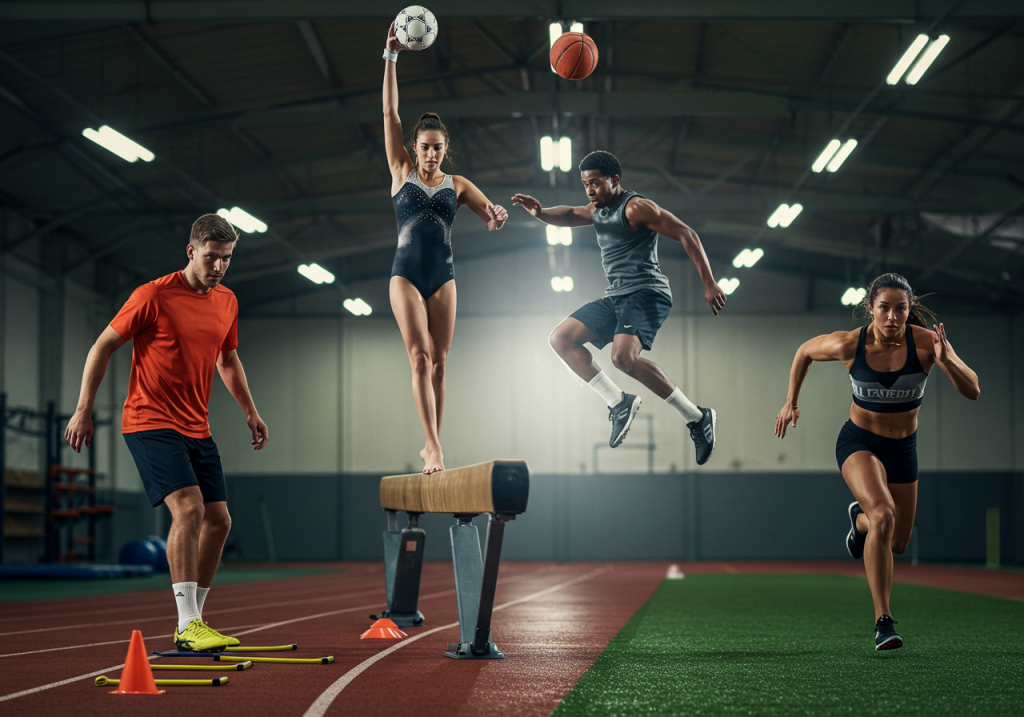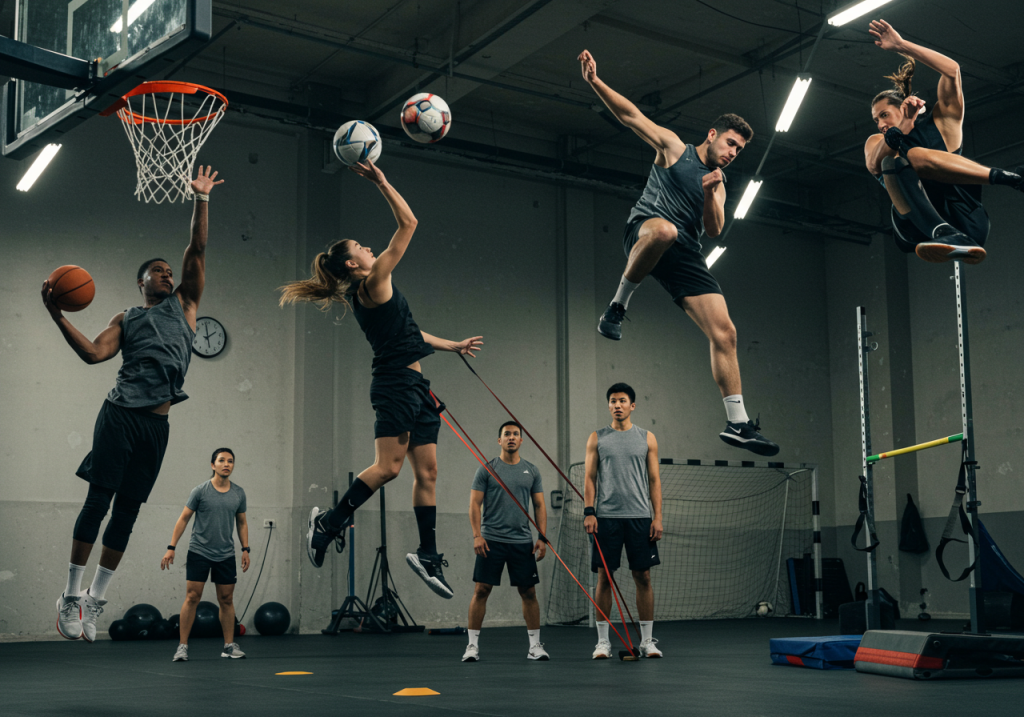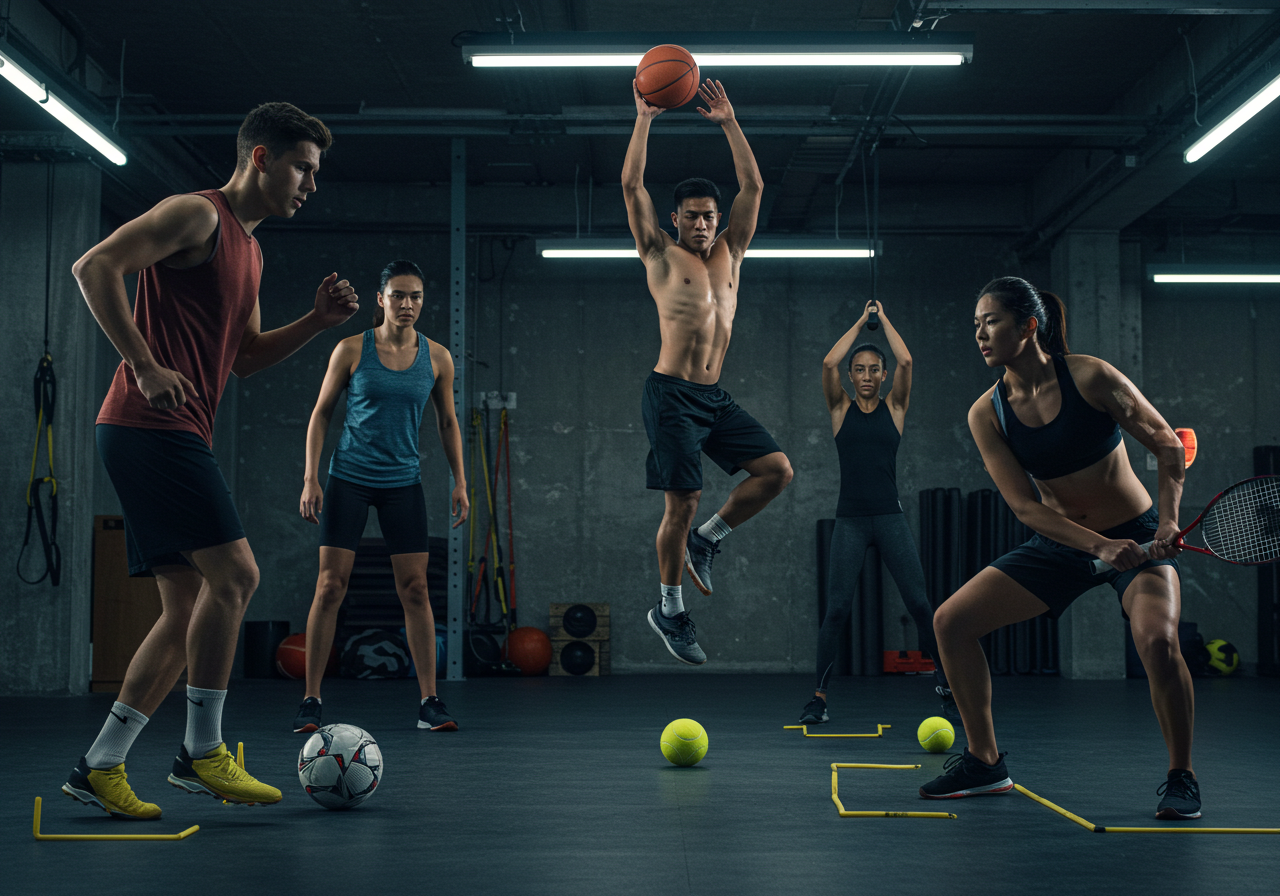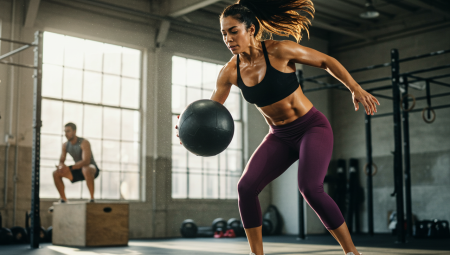

Recovery is just as crucial as training. Overworking your muscles without proper rest can lead to fatigue and injuries. Think of your body like a rechargeable battery—without enough downtime, it won’t function at its best. Incorporating stretching, foam rolling, and adequate rest into your routine enhances flexibility, prevents injuries, and keeps you in top form.
By understanding the unique demands of your sport, setting targeted goals, and prioritizing recovery, you’ll set yourself up for long-term success. Train smart, stay consistent, and watch your performance reach new heights!
Unlocking Peak Performance: A Sports-Specific Training Guide
Optimizing your fitness routine to match the exact demands of your sport isn’t just about building strength—it’s about developing muscle memory, efficiency, and overall athletic performance. Think of it like programming a computer; you want the right software running to execute tasks seamlessly. For example, a soccer player benefits more from agility drills and endurance training than from a generic cardio workout. Why? Because quick sprints, rapid direction changes, and sustained energy are essential for dominating the field.
Sports-specific training goes beyond strength—it integrates flexibility, balance, and endurance to create a well-rounded athlete. Take a gymnast on the balance beam; without core stability and flexibility exercises, maintaining control mid-routine would be nearly impossible. Targeted training ensures athletes can perform with precision, control, and confidence.

By aligning your workouts with the specific demands of your sport, you’re not just training—you’re evolving into a stronger, more efficient, and mentally resilient athlete. Train smart, stay focused, and unlock your peak performance!
Tailored Workouts: Building the Perfect Fitness Plan for Your Sport
Success in any sport starts with understanding its unique physical demands. Are you sprinting down the field, diving into the pool, or powering through lifts at the gym? Each sport requires a different combination of speed, endurance, and strength. A soccer player, for instance, thrives on agility and stamina, while a weightlifter prioritizes raw power. The key is to identify the physical attributes that define top performers in your discipline and structure your training around them.
Functional training is where real progress happens. Think of it as the missing link between traditional workouts and in-game performance. These exercises mimic the movements of your sport—whether it’s plyometrics for explosive power, resistance bands for improved coordination, or agility drills for faster footwork. The goal is to balance strength training with sport-specific drills. After all, training like a bodybuilder won’t necessarily make you a better tennis player—you need to sharpen your serve and quicken your reactions, not just build muscle mass.
Equally important is listening to your body. Recovery is a critical part of progress, allowing muscles to rebuild and grow stronger. Rest days, mobility work, and mindful adjustments to your routine can make all the difference. Even elite athletes take downtime to prevent injuries and maintain peak performance.
By aligning your fitness regimen with your sport’s unique demands, integrating functional training, and prioritizing recovery, you’ll set yourself up for long-term success. Train smart, stay consistent, and watch your performance soar!
From Amateur to Athlete: How to Elevate Your Training for Sports Success
Success in sports starts with a clear goal—think of it as plotting a course on a treasure map. Are you aiming to slam dunk like LeBron or score the game-winning goal? Instead of a vague objective like “getting fit,” focus on specific performance targets, such as improving sprint speed or increasing vertical jump height. Precision in goal-setting helps shape a training plan that delivers real results.
Your workout strategy is just as crucial. Imagine trying to juggle while riding a unicycle—mixing general workouts with sports-specific drills without a clear plan can feel just as chaotic. Tailor your training to your sport’s unique demands. For instance, if you’re a runner, incorporating interval training will enhance both speed and endurance far more effectively than steady, long-distance jogs.

Recovery is another vital component. Think of it as pausing before a big boss fight in a video game—you need time to recharge before giving your best performance. Prioritize stretching, foam rolling, and even yoga to improve flexibility, prevent injuries, and keep your body in peak condition.
Finally, having a training partner can make all the difference. Like a co-op teammate in a game, they push you to stay accountable, offer valuable feedback, and keep motivation high. By refining your approach and embracing a sport-specific mindset, you’ll be well on your way to athletic success. So, are you ready to take the leap?
Game On: Essential Training Techniques for Sports-Specific Fitness
Achieving peak performance in any sport requires a strategic approach to training. The key? Tailoring your workouts to match the exact demands of your game.
Start with agility drills that replicate real-game movements. If you’re a soccer player, shuttle runs and ladder drills will sharpen your footwork and reaction time. Tennis players, on the other hand, benefit from lateral movements and explosive sprints to enhance court coverage. Think of it like fine-tuning an instrument—small adjustments lead to a perfectly coordinated performance.
Strength training is another crucial component, but it’s not about lifting heavy just for the sake of it. Instead, target the muscle groups most used in your sport. A swimmer, for example, doesn’t just focus on swimming laps; they incorporate resistance exercises to build shoulder strength and core stability for powerful strokes. The goal isn’t bulk—it’s functional strength that directly enhances performance.
Flexibility and recovery are just as important. Ever noticed how elite gymnasts move with ease? That’s the result of consistent mobility work. Integrating dynamic stretching or yoga into your routine improves your range of motion and reduces injury risks, allowing you to move effortlessly on the field.
Finally, consistency is key. Just as you wouldn’t skip practice before a big game, your training sessions should be a priority. With the right techniques and a dedicated mindset, you’ll be on the path to mastering your sport—because when it comes to fitness, every session brings you one step closer to victory.
Maximize Your Game: The Science Behind Sports-Specific Fitness Training
The secret to peak athletic performance lies in a tailored approach to training. Instead of following a generic workout plan, elite athletes analyze their sport’s unique demands—much like designing a custom suit where every detail must fit perfectly. This precision-based strategy targets key muscle groups, optimizes energy systems, and refines movement patterns that directly enhance game-day performance.
Take basketball, for example. Players don’t just focus on general fitness; they train for explosive jumps, rapid sprints, and quick direction changes—exactly the movements they’ll execute during a match. The real game-changer? Combining strength training with agility drills, plyometrics, and endurance exercises designed specifically for basketball. This strategic approach not only maximizes performance but also reduces injury risks, keeping athletes in top form throughout the season.
The same principle applies across all sports. Whether it’s a sprinter fine-tuning acceleration, a swimmer building core strength for powerful strokes, or a soccer player sharpening agility for quick footwork, every movement is trained with purpose.
So, the next time you watch an athlete in action, remember the science behind their performance. Sports-specific training ensures every movement counts—because in a competitive world where milliseconds make a difference, optimizing your training could be the key to unlocking your full potential.
Fit for the Field: 10 Essential Exercises for Sports-Specific Conditioning
Achieving peak performance requires a fitness regimen tailored to your sport’s unique demands. Here are 10 must-do exercises to enhance your sports-specific conditioning and help you dominate on the field.
1. Agility Drills
Think about a sprinter weaving through cones—that’s agility in action! Quick directional changes are crucial in many sports. Agility drills improve your ability to shift directions quickly and maintain speed, making you more reactive and adaptable in the game.
2. Plyometric Exercises
Jump squats, box jumps, and other plyometric movements are all about explosive power. These exercises improve your jumping ability and overall explosiveness, helping you make those high-impact moves during play, like a rocket launch for your legs.
3. Core Stability
Core exercises like planks and medicine ball twists are key for maintaining balance and stability. A strong core acts as the foundation of your movements, keeping you grounded and steady even during intense gameplay.
4. Interval Training
Endurance is essential for sustained performance, and interval training is the perfect way to build it. By alternating between high-intensity sprints and active recovery, you’ll increase both your cardiovascular fitness and your ability to recover quickly, just like an athlete in peak condition.
5. Strength Training
Strength is vital to withstand the physical demands of any sport. Incorporate compound exercises like squats, deadlifts, and bench presses to build the muscles needed for tackling, jumping, and more.
6. Functional Movements
Kettlebell swings and similar functional exercises mimic real-game movements, helping you develop strength and coordination that directly translates into better performance on the field or court.
7. Flexibility and Mobility
Flexibility isn’t just for gymnasts; it’s essential for every athlete. Incorporating dynamic stretches, yoga, and foam rolling into your routine enhances your range of motion and reduces injury risk, ensuring you can move with grace and ease during competition.
8. Speed Drills
Improving your sprinting technique and acceleration can make a world of difference, especially in sports like football, soccer, or track. Sprint drills sharpen your quickness and teach you how to explode off the starting line with power.
9. Balance Exercises
Sports often demand great balance, especially when changing directions or staying on your feet in tricky situations. Exercises like single-leg squats or stability ball work help improve your balance and stability under pressure.
10. Recovery
Lastly, don’t forget to incorporate rest days into your regimen. Overworking your body leads to fatigue and injury. Proper recovery through stretching, foam rolling, and even light cardio is essential to staying at the top of your game.
By focusing on these key exercises and customizing your training to suit your sport, you’ll be on the fast track to improved performance. Whether you’re a soccer player sprinting across the field or a basketball player soaring through the air, these exercises will help you become the best version of yourself in the game.




